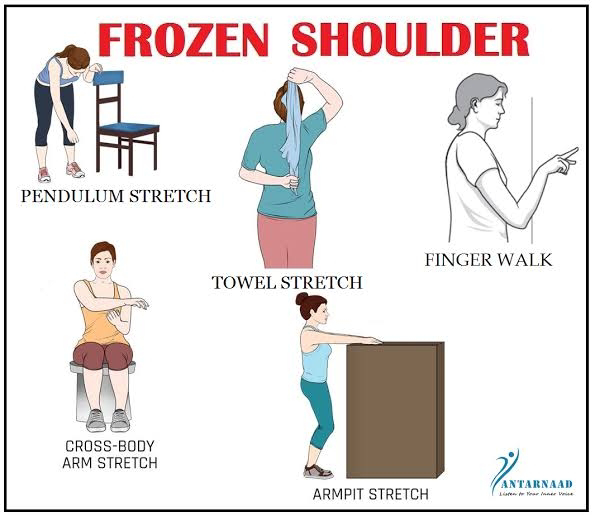Physiotherapy treatments for frozen shoulder

Physiotherapy is a common and effective treatment approach for frozen shoulder, also known as adhesive capsulitis. Frozen shoulder is a condition characterized by stiffness, pain, and limited range of motion in the shoulder joint.
The goals of physiotherapy in treating frozen shoulder are to reduce pain, improve range of motion, and restore shoulder function. Here are some common physiotherapy techniques and interventions used in the management of frozen shoulder:
- Range of motion exercises:

Physiotherapists prescribe specific exercises to help restore the range of motion in the shoulder joint. These exercises often involve gentle stretching and movement of the affected shoulder to gradually increase flexibility.Strengthening exercises: Weakness in the muscles around the shoulder joint can contribute to frozen shoulder. Physiotherapists design strengthening exercises to target these muscles and improve their strength and stability.

3. Manual therapy: Hands-on techniques, such as joint mobilization and soft tissue mobilization, can be used to help improve shoulder mobility and reduce pain. Manual therapy techniques are typically performed by the physiotherapist and can provide immediate relief.

4. Heat and cold therapy: Applying heat or cold to the shoulder can help alleviate pain and reduce inflammation. Heat therapy, such as hot packs or warm towels, is often used before exercise or stretching to relax the muscles. Cold therapy, like ice packs or cold compresses, may be used after exercises to reduce swelling and pain.
5. Heat and cold therapy: Applying heat or cold to the shoulder can help alleviate pain and reduce inflammation. Heat therapy, such as hot packs or warm towels, is often used before exercise or stretching to relax the muscles. Cold therapy, like ice packs or cold compresses, may be used after exercises to reduce swelling and pain.
6. Postural and ergonomic education: Physiotherapists can provide guidance on maintaining proper posture and ergonomics during daily activities. Correcting postural imbalances and avoiding repetitive or excessive shoulder movements can aid in the recovery process.

7. Home exercise program: A tailored home exercise program is usually prescribed to reinforce the benefits of physiotherapy sessions. Consistent practice of prescribed exercises can help expedite the recovery and maintain shoulder function.
It’s important to note that the specific physiotherapy techniques used for frozen shoulder may vary depending on the individual’s condition and the recommendations of the treating physiotherapist. It is always advisable to consult with a qualified healthcare professional, such as a physiotherapist, for a comprehensive evaluation and personalized treatment plan.


